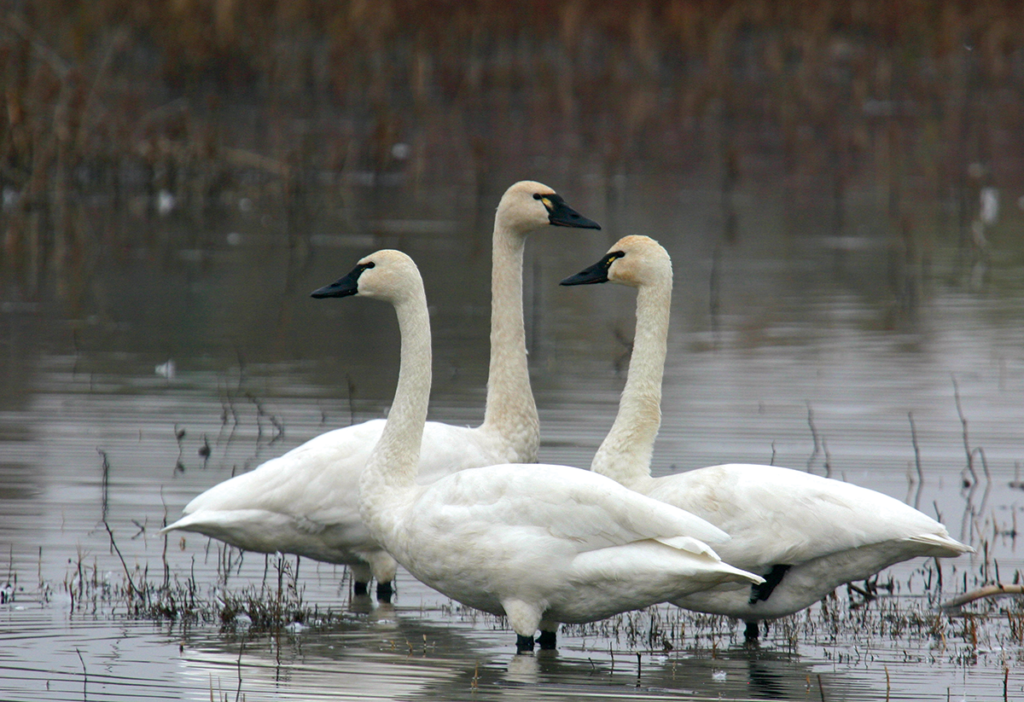
By Susan Buckingham
A year ago when I moved into Queens Landing I didn’t know that there would be swans in my backyard. I was delighted to see a pair of graceful Tundra Swans arrive on the Chester River as I unpacked boxes. As the winter pressed its cold (and colder!) will on the landscape, the swans kept coming until I could count up to 50 floating in and out of Macum Creek with the ebb and flow of the tides. Having moved from the DC suburbs of Maryland, I didn’t know that swans wintered on the Chesapeake Bay, so I looked up some information at the Cornell Bird Lab.
As their name implies, the native Tundra Swans come from the Arctic tundra in the far north of Canada and Alaska arriving in November and leaving in March. They used to be called whistling swans after the noise of their wings in flight. Their call is similar to the Canada Goose, but higher pitched. They arrive in large numbers in the fall and are generally the biggest birds in the area. Feeding and sleeping on the water and in nearby fields, they eat mostly subaquatic vegetation and seeds.
Although non-native Mute Swans imported from Europe and Asia populated the bay for a time, there are probably not many remaining. Closely related Trumpeter Swans rarely winter on the Chesapeake with Tundra Swans.
To tell one swan from another, check out the bills: adult Tundra Swans have black bills with a yellow patch up towards the eyes; Trumpeter Swans have black bills with no yellow; and Mute Swans have orange bills. They are sometimes confused with Snow Geese who are smaller with shorter necks.
If you are seeing beautiful swans in the area, and it’s winter, chances are best that they are Tundra Swans. I feel very lucky to share a habitat with these lovely and storied creatures.


